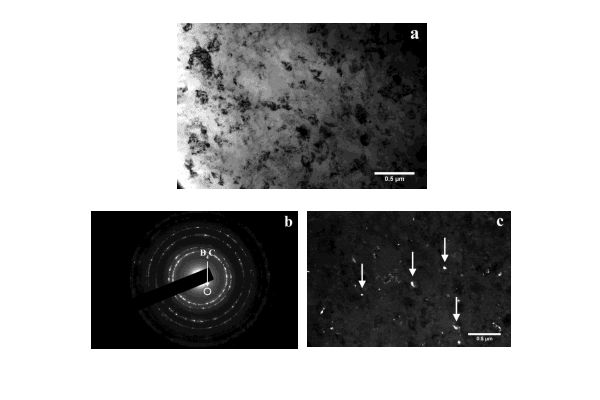Nathan Behm

Nathan Behm

The Influence of Reinforcement Size on the Microstructure and Mechanical Behavior of a Nanostructured Aluminum-Based Metal Matrix Composite
Abstract:
With increased availability and growing commercial applications, aluminum-based metal matrix composites show promise as high specific strength structural materials. Before they can be implemented however, they require thorough characterization and testing. A novel nanostructured aluminum-based metal matrix composite (MMC) was characterized through a combination of microstructural analysis and mechanical testing. Two composites were studied, an aluminum MMC reinforced with 50 nm boron carbide, (B4C) and an aluminum MMC reinforced with 500 nm boron carbide. Transmission electron microscopy (TEM) analysis revealed an ultra-fine grained matrix with grains on the order of 100–300 nm. The quasi-static and dynamic response of the composites was compared with the behavior of the unreinforced aluminum alloy, and it was found that the reinforcement resulted in a 30% improvement in strength. The decrease in the reinforcement size from 500 to 50 nm activated an additional strengthening mechanism, which further improved the strength of the MMC reinforced with the 50 nm B4C. Dynamic compression tests were performed at elevated temperatures up 400°C on the composites, and it was found that they exhibited impressive strengths considering the thermal softening prevalent in aluminum. The reinforcement size was found to play an important role in the strain softening exhibited at elevated temperature, fracture mechanism, and composite strength. Models to describe the composite behavior are presented.
Sponsoring Chair: Dr. Qiuming Wei
Committee: Dr. Haitao Zhang, Dr. Harish Cherukuri, Dr. Ronald Smelser, Dr. Don Chen